We need your consent to use the individual data so that you can see information about your interests, among other things. Click "OK" to give your consent.
ASTM E2394-11
Standard Practice for Maintenance, Renovation and Repair of Installed Asbestos Cement Products
STANDARD published on 1.2.2011
The information about the standard:
Designation standards: ASTM E2394-11
Note: WITHDRAWN
Publication date standards: 1.2.2011
SKU: NS-45210
The number of pages: 18
Approximate weight : 54 g (0.12 lbs)
Country: American technical standard
Category: Technical standards ASTM
The category - similar standards:
Annotation of standard text ASTM E2394-11 :
Keywords:
Asbestos-cement, Building materials/applications, ICS Number Code 91.100.40 (Products in fibre-reinforced cement)
Additional information
| Significance and Use | ||||||
|
The inhalation of airborne asbestos fibers has been shown to cause asbestosis, lung cancer, and mesothelioma. 5.1.1 The U.S. Environmental Protection Agency reports that “Effects on the lung are a major health concern from asbestos, as chronic (long-term) exposure to asbestos in humans via inhalation can result in a lung disease termed asbestosis. Asbestosis is characterized by shortness of breath and cough and may lead to severe impairment of respiratory function. Cancer is also a major concern from asbestos exposure, as inhalation exposure can cause lung cancer and mesothelioma (a rare cancer of the thin membranes lining the abdominal cavity and surrounding internal organs), and possibly gastrointestinal cancers in humans. EPA has classified asbestos as a Group A, known human carcinogen” (1). The World Health Organization states: “Exposure to asbestos occurs through inhalation of fibres primarily from contaminated air in the working environment, as well as from ambient air in the vicinity of point sources, or indoor air in housing and buildings containing friable asbestos materials. The highest levels of exposure occur during repackaging of asbestos containers, mixing with other raw materials and dry cutting of asbestos-containing products with abrasive tools” (2). The World Bank states: “Health hazards from breathing asbestos dust include asbestosis, a lung scarring disease, and various forms of cancer (including lung cancer and mesothelioma of the pleura and peritoneum). These diseases usually arise decades after the onset of asbestos exposure. Mesothelioma, a signal tumor for asbestos exposure, occurs among workers’ family members from dust on the workers’ clothes and among neighbors of asbestos air pollution point sources” (3). Extensive litigation has occurred worldwide as a result of the health effects of asbestos over the past century, resulting in considerable economic consequences. The regulatory response to asbestos hazards has resulted in civil sanctions and criminal prosecution of violators. Regarding the production and use of asbestos fiber: The U.S. Geological Survey (USGS) reports: "World consumption was relatively steady between 2003 and 2007, averaging 2.11 million metric tons (Mt). The leading consuming countries in 2007 were, in decreasing order tonnage, China (30 %), India (15 %), Russia (13 %), Kazakhstan and Brazil (5 % each), and Thailand, Uzbekistan, and Ukraine (4 % each). These eight countries accounted for about 80 % of world asbestos consumption in 2007. From 2003 through 2007, apparent consumption declined in most countries. However, there were significant increases in apparent consumption in China, India, and Uzbekistan between 2003 and 2007. In general, world asbestos consumption is likely to decline as more countries institute bans on its use” (4). The World Health Organization also states: “Bearing in mind that there is no evidence for a threshold for the carcinogenic effect of asbestos and the increased cancer risks have been observed in populations exposed to very low levels, the most efficient way to eliminate asbestos-related diseases is to stop using all types of asbestos. Continued use of asbestos-cement in the construction industry is of particular concern, because the workforce is large, it is difficult to control exposure, and in-place materials have the potential to deteriorate and pose a risk to those carrying out alterations, maintenance, and demolition” (2). The Chrysotile (formerly Asbestos) Institute reports that: “More than 90 % of the world production of chrysotile is used in the manufacture of chrysotile-cement, in the form of pipes, sheets, and shingles. These products are used in some sixty industrialized and developing countries” (5). It follows that the installed base of asbestos-cement products worldwide is enormous and continues to grow. In other words, the problem of exposure to asbestos fibers from working with these materials is substantial and will remain significant for the foreseeable future. The significance of this practice is that it provides work practices that protect worker and community health within the resources available in developing as well as industrialized countries. It relies as much as possible on tools, equipment, and supplies that are readily available without recourse to specialty suppliers. The techniques require careful and diligent workmanship but do not require the services of highly-skilled tradesmen. This practice is intended to be used not only by construction workers and tradesmen in the performance of their work, but also by building owners and others as the basis for preparing contracts and tenders for activities included in the scope of this practice. It will also provide a foundation for government officials to develop regulations intended to protect worker and community health. Where such regulations already exist, of necessity they take precedence over this practice in event of a conflict. The persons who are most at risk of exposure to airborne asbestos fibers are those who perform work on asbestos-cement products during maintenance, renovation, and repair operations. This practice places its primary emphasis on the protection of their health. However, other members of the communityother workers and individuals in a building being renovated, residents of a house undergoing repairs, and unsuspecting bystandersare at risk to a lesser degree. By minimizing the risk to the worker performing the maintenance, renovation, and repair operations, the potential exposure of others is reduced as well. It is expected that employers will comply voluntarily with the provisions of this practice in the interest of protecting worker and community health and reducing their own liability. However, the existence of a regulatory infrastructure for occupational and community health greatly enhances compliance with measures to reduce exposure to asbestos fibers and other toxic materials. In some countries, such a system is highly advanced, but in others it needs to be created or further developed. These efforts can be furthered by referencing this practice in laws and regulations and requiring compliance with its provisions. Issuance of construction permits can be made contingent on showing evidence of worker training, experience in the use of these procedures, and adequate resources (manpower, equipment, and supplies) to use them properly. A contractual framework that references this practice and requires use of its procedures ensures the building owner or other party securing construction services under a contract or tender arrangement that the responding offeror has been informed as to the expected level of performance when working with asbestos-cement products. |
||||||
| 1. Scope | ||||||
|
1.1 This practice describes work practices for asbestos-cement products when maintenance, renovation, and repair are required. This includes common tasks such as drilling and cutting holes in roofing, siding, pipes, etc. that can result in exposure to asbestos fibers if not done carefully. These work practices are supplemented and facilitated by the regulatory, contractual, training, and supervisory provisions of this practice. 1.2 Materials covered include those installed in or on buildings and facilities and those used in external infrastructure such as water, wastewater, and electrical distribution systems. Also included is pavement made from asbestos-cement manufacturing waste. 1.3 The work practices described herein are intended for use only with asbestos-cement products already installed in buildings, facilities, and external infrastructure. They are not intended for use in construction or renovation involving the installation of new asbestos-cement products. 1.4 The work practices are primarily intended to be used in situations where small amounts of asbestos-cement products must be removed or disturbed in order to perform maintenance, renovation, or repair necessary for operation of the building, facility, or infrastructure. 1.5 The work practices described herein are also applicable for use where the primary objective is the removal of asbestos-cement products from the building or other location, particularly the use of wet methods and other means of dust and fiber control. 1.6 The values stated in inch-pound units are to be regarded as standard. The values given in parentheses are mathematical conversions to SI units that are provided for information only and are not considered standard. 1.7 Warning—Asbestos fibers are acknowledged carcinogens. Breathing asbestos fibers can result in disease of the lungs including asbestosis, lung cancer, and mesothelioma. Precautions in this practice should be taken to avoid creating and breathing airborne asbestos particles from materials known or suspected to contain asbestos. Comply with all applicable regulatory requirements addressing asbestos. 1.8 This practice does not address safety hazards associated with working on asbestos-cement products such as falling through roof panels or trench cave-ins. The use of power tools presents possible electrical hazards, particularly in wet environments. These and other safety hazards must be considered and controlled in compliance with the employer's policies and applicable regulations. 1.9 This standard does not purport to address all of the safety concerns, if any, associated with its use. It is the responsibility of the user of this standard to establish appropriate safety and health practices and determine the applicability of regulatory limitations prior to use. |
||||||
| 2. Referenced Documents | ||||||
|
Similar standards:
Historical
1.12.2012
Historical
1.4.2013
Historical
1.12.2012
Historical
1.5.2008
Historical
1.11.2009
Historical
1.5.2008
We recommend:
Technical standards updating
Do you want to make sure you use only the valid technical standards?
We can offer you a solution which will provide you a monthly overview concerning the updating of standards which you use.
Would you like to know more? Look at this page.


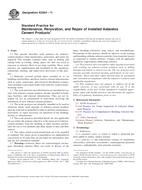
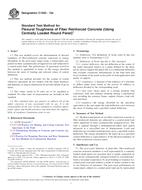 ASTM C1550-12a
ASTM C1550-12a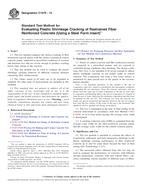 ASTM C1579-13
ASTM C1579-13 ASTM C1609/C1609M-12..
ASTM C1609/C1609M-12..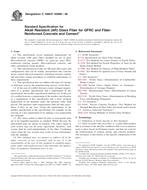 ASTM C1666/C1666M-08..
ASTM C1666/C1666M-08..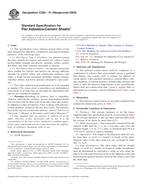 ASTM C220-91(2009)..
ASTM C220-91(2009).. ASTM C221-98(2008)..
ASTM C221-98(2008)..
 Cookies
Cookies
